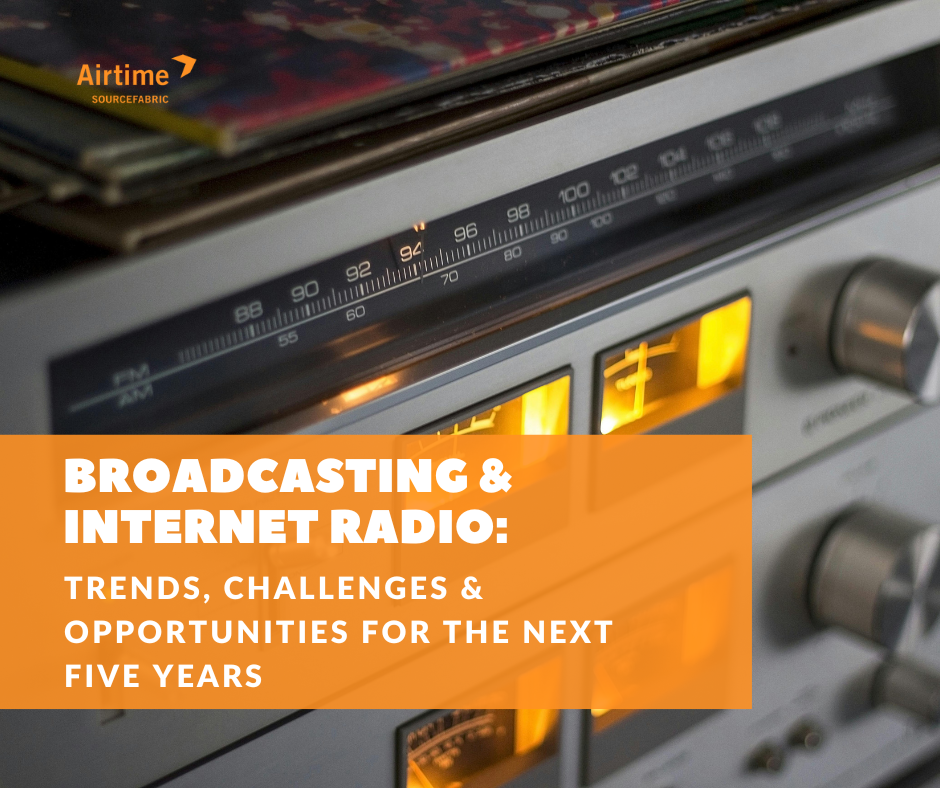What might radio broadcasting look like in 2030? To find out, we did what many are doing when faced with the unknown: We asked OpenAI’s ChatGPT, which offered up a litany of predictions on 5G, smart devices, and shifting audience habits.
But we didn’t stop there. Instead, we dug deeper and cross-referenced ChatGPT’s insights with expert market research, forecasts, and industry reports. What follows is our best guess on where broadcasting and internet radio markets are headed.
1. AI-Driven Personalisation
Artificial intelligence is inevitably becoming an essential tool in the production, curation, and delivery of radio content. Research by Future Data Stats predicts that AI will add $22.9 billion of value to the music and audio market by 2030, as broadcasters adopt AI-powered playlisting, mood-based content personalisation, and automated voiceovers. These technologies will increasingly be integrated into internet radio broadcasting platforms and online radio station software, helping even small stations offer personalised experiences. The evolution from linear programming to fully adaptive listening experiences will change audience engagement, offering users content that feels live, interactive, and adjusted to their preferences.
2. Platform Convergence
The traditional boundaries between AM/FM radio, streaming, video platforms, and smart devices are disappearing. Technologies such as ATSC 3.0 and 5G integration will ensure that content is accessible seamlessly across vehicle, mobile and home devices. 5G Broadcast allows content to be transmitted using mobile network infrastructure, but without consuming data bandwidth for each individual user. ATSC 3.0 treats every piece of broadcast content (for example, a live radio station or a TV channel) as an IP packet stream, just like Netflix or Spotify. This enables broadcasters to send live radio or video content to smart TVs, mobile apps, cars, and home devices without needing separate distribution chains. By 2030, cross-platform content strategies will be a necessity, not a choice.
3. Immersive Audio
Emerging technologies such as edge computing will support the development of immersive and interactive audio formats. Spatial audio, real-time personalisation, and “broadcast-to-IP” hybrid models will become mainstream, enabling broadcasters to offer richer, multi-dimensional content experiences. These advancements open the door to entirely new forms of listening – radio, live, and immersive – each enhanced with data overlays.
4. Monetisation Challenges
Despite the projections for market growth, the broadcasting and internet radio sector might be facing monetisation challenges. Radio stations are competing with streaming music and podcast alternatives. Tech giants such as Google and Spotify are taking a growing share of advertising revenues, leaving traditional broadcasters with reduced margins. Subscription models and micro-payment systems are emerging as potential solutions, but sustaining profitability in a fragile content ecosystem will remain a challenge.
5. The Rise of Hyperlocal & Niche Content
One of the sector’s greatest opportunities lies in the scalability of hyperlocal and niche content channels. The low-cost entry barrier for internet radio stations, combined with advances in AI automation, enables broadcasters to cater to highly specific audiences. As large-scale mass media fragments further, these niche streams offer a path to both audience loyalty and sustainable monetisation. Using accessible internet radio broadcasting software – such as AirtimePro – hobbyists and small broadcasters can start their online radio stations focused on niche topics or local communities, making hyperlocal content more scalable than ever.
The accessibility of creating internet radio stations, combined with developments in AI automation and personalised content delivery could enable broadcasters to serve very specific communities and niche topics.
Conclusion
The broadcasting and internet radio industries are undergoing significant transformation. The convergence of AI, 5G, and immersive audio presents a myriad of opportunities for those willing to embrace change and innovate. Simply put, the sector’s success will depend on its ability to adapt. To thrive, broadcasters and radio producers must embrace technology, adjust revenue models, and deliver content that is relevant in an interactive digital landscape.
Are you ready to hit the airwaves? Quick start your own internet radio station today with a 7-day free trial!
7 day free trial Plans from $9.95/mo


Leave a Reply